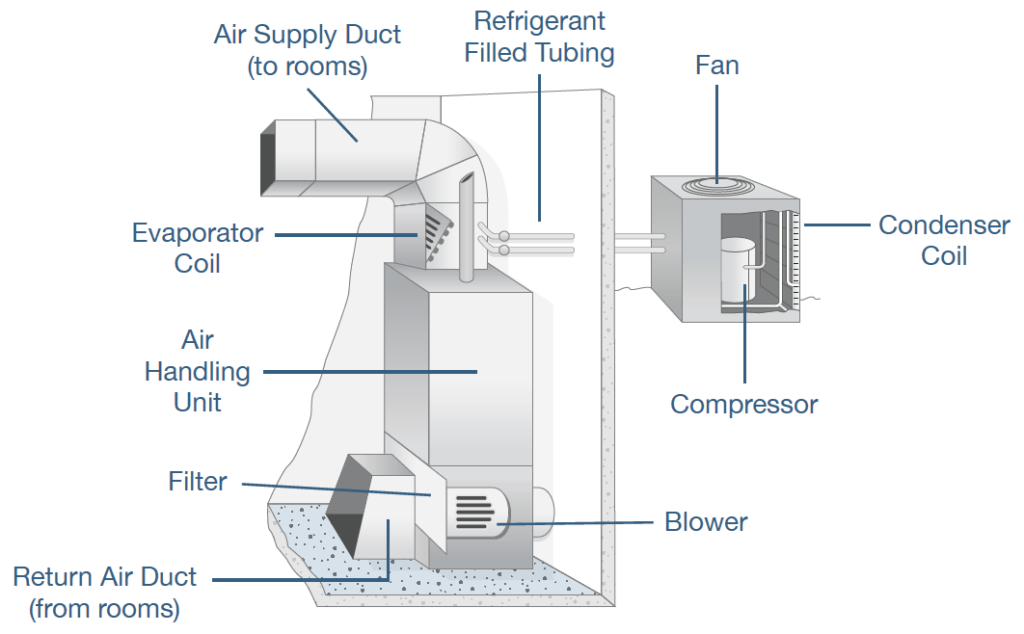In the simplest possible terms, air ducts are big tubes or hoses that move hot, cold or fresh air around your house or business, as a vital part of the HVAC system. Air ducts are what make central heating and cooling possible, since they allow for one large piece of equipment to condition air for the entire building. Without air ducts we would be forced to use window air conditioning boxes on every room we wanted to cool – a highly inefficient system, if you think about it.
The entire duct system in a house or building is called “ductwork”, and they are usually designed by experts to ensure maximum efficiency and cost-effectiveness. We’ll go over the installation process shortly, but first let’s talk about what ducts are made of.

There are many, many types of ducts: from metal to fabric and everything in between. They can be square or round, rigid or flexible, and this variety of options is what allows ducts to serve all of their various purposes in homes, businesses and industry, as well as more specialized environments.
The most common types of ducts are: sheet metal, fiberglass lined, fiberboard, and flex-line air ducts, and they are classified according to their rigidity, since it determines what jobs they are better suited to.
Rigid ductwork is best suited for when the ductwork calls for angles, twists and bends, and are the default type for their price, durability and ease of installation.
Sheet metal duct is made of galvanized steel or aluminium – they are the most durable kind, and the least prone to gather mold or mildew. In commercial settings, it might be desirable to line metal ducts to reduce vibration and noise, and to insulate them to increase their energy efficiency. This calls for fiberglass lined ductwork, which has many pros, but also the cons of being hard to clean and prone to mold.
Flip those around and you get fiberboard ducts: these are made from a mix of fiberglass and resin and then coated with a sheet of laminate foil to keep moisture at bay. These provide the best insulation for heating and cooling purposes.
Flex ducts are hose-like in nature: a metal coil is wrapped in a plastic membrane, which is then coated in an insulating material.
Flexible duct materials are usually cheaper than rigid ones, and they are easy to install, but they have limitations which must be kept in mind, and they need to be very well supported, and protected from sagging and kinks.
Air conditioning and heating systems are complex, but they all tend to follow the same general design principles. The condenser and compressor work outside the house to get rid of the hot air (in case of an AC), and there is usually an inside part, known as the air handler, that manages the cooling and distribution of the air.
Once the air has been cooled adequately, it is pushed through the trunk lines, which are the largest ducts – you may have seen an action hero or two crawling through these in films. Trunk lines supply air onto the aptly named “branch ducts”, which have a smaller diameter and bring air to smaller supply ducts or directly into rooms.
In larger systems there may be return vents, through which air is extracted from the rooms and sent via return air ducts back to the air handler to be cooled, filtered or otherwise processed.
